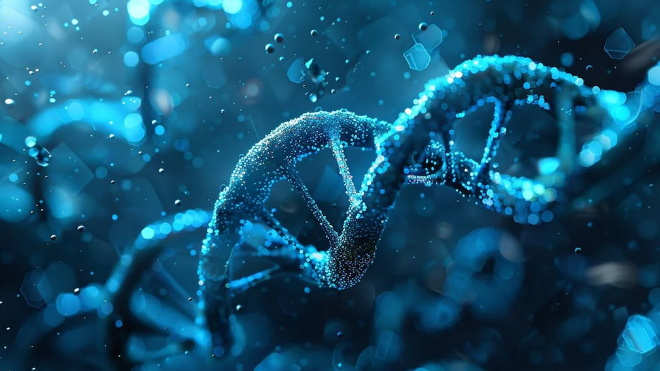The Shrinking Y Chromosome (GS Paper 2, Health)

Introduction
- The Y chromosome, a key player in determining male sex and its unique evolutionary path, has intrigued scientists for decades.
- Recent studies reveal that this chromosome is gradually shrinking, prompting a range of questions about its future.
- This article explores the critical role of the Y chromosome, the phenomenon of its shrinkage, insights from other species, and the potential implications for human reproduction.
The Critical Role of the Y Chromosome
- The Y chromosome is essential for human sex determination. It carries the SRY (Sex-determining Region Y) gene, which initiates the development of male characteristics by triggering the formation of testes.
- These testes then produce male hormones such as testosterone, guiding the embryo to develop male physical traits.
- In contrast to the X chromosome, which is larger and contains over 900 genes with various bodily functions, the Y chromosome is relatively small, comprising about 55 functional genes.
- These genes are crucial for spermatogenesis (sperm production) and male fertility.
The Phenomenon of Y Chromosome Shrinkage
- The shrinking of the Y chromosome is a significant subject of scientific study.
- Over the past 166 million years, the Y chromosome has experienced considerable gene loss.
- For instance, it is estimated that the Y chromosome has lost over 900 genes since its evolutionary origins.
- Recent projections suggest that if this trend continues, the Y chromosome could theoretically disappear in about 11 million years.
- This raises concerns about the future of male reproduction and the long-term survival of the human species.
Insights from Other Species
The potential disappearance of the Y chromosome is not unique to humans. Various species have already undergone similar evolutionary changes, providing valuable insights:
Spiny Rats (Amami Spiny Rats):
- A 2022 study revealed that the Amami spiny rat from Japan lost its Y chromosome. Despite this, the species continues to survive and reproduce.
- Researchers identified a new sex-determining gene on chromosome 3, near the SOX9 gene, which appears to have taken over the Y chromosome's role.
- This suggests that even if the Y chromosome disappears, alternative genetic systems can evolve to fulfill its functions.
Mole Voles:
- Mole voles from Eastern Europe also lost their Y chromosome.
- Research indicates that the genes previously on the Y chromosome have relocated to other chromosomes, allowing the species to maintain reproductive functions without the traditional Y chromosome.
Difference Between X and Y Chromosomes
|
Feature
|
X Chromosome
|
Y Chromosome
|
|
Presence in Gender
|
Both males and females
|
Only in males
|
|
Number per Cell
|
Two in females (XX), one in males (XY)
|
One in males (XY), none in females (XX)
|
|
Size
|
Larger, contains more genes
|
Smaller, contains fewer genes
|
|
Genetic Material
|
Genes for various traits
|
Genes mainly for male traits
|
|
Sex Determination
|
Does not determine sex alone
|
Determines male sex when paired with X
|
|
Recombination
|
Recombines with another X chromosome in females
|
Recombines only at tips with X (pseudoautosomal region)
|
|
Inheritance
|
From both parents
|
Only from the father
|
|
Associated Disorders
|
X-linked disorders like hemophilia and color blindness
|
No major disorders, but can carry Y-linked traits
|
|
Function in Females
|
One X chromosome is usually inactivated (Barr body)
|
Not present
|
|
Function in Males
|
Active, contributes to traits and characteristics
|
Determines male characteristics and aids in sperm production
|
Implications for Human Reproduction
The shrinking Y chromosome presents several potential scenarios:
Evolution of New Sex-Determining Mechanisms:
- As observed in other species, the evolution of new sex-determining mechanisms is a possible outcome.
- If the Y chromosome continues to shrink, new genetic pathways or systems could evolve to replace its function, potentially involving alternative genes or genetic systems.
Impact on Human Evolution:
- If distinct sex-determining systems emerge in different regions, it could lead to significant evolutionary divergence.
- Over millions of years, this divergence might result in multiple human species, each with its own method of sex determination.
- While speculative, this highlights the potential for profound evolutionary changes.
Potential Threats to Human Survival:
- While the possibility of the Y chromosome disappearing raises concerns, evolution often finds solutions to genetic challenges.
- The adaptability observed in other species suggests that new mechanisms may evolve to ensure the continuation of human reproduction.
- Ongoing research is crucial to monitor these genetic changes and their potential impacts.
Conclusion
- The Y chromosome’s shrinking represents a complex and evolving challenge in genetics.
- Although its potential disappearance raises significant questions about future reproduction, insights from species like spiny rats and mole voles provide hope.
- Evolution's adaptability suggests that new solutions may emerge to address genetic decay challenges.
- As research continues, we gain a deeper understanding of how life adapts to genetic changes, offering hope for the continued survival and diversity of the human species.


